Medical Products
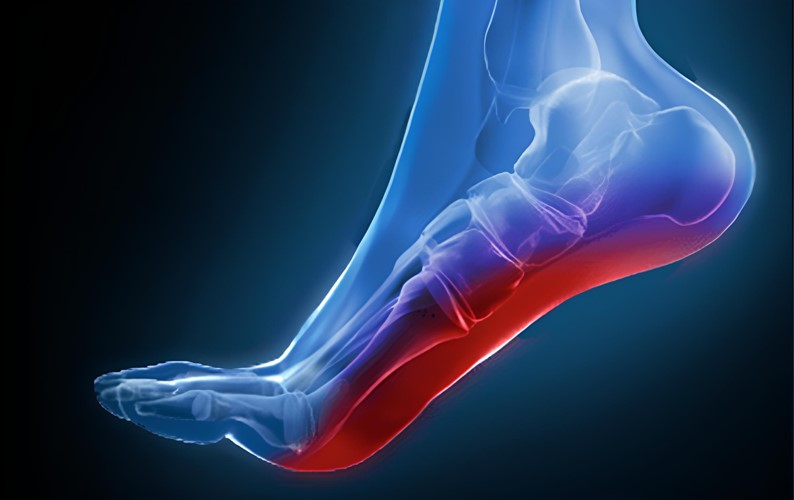
The calcaneus (heel bone) is the largest bone in the foot and absorbs the most amount of shock and pressure. Calcium deposits form when the plantar fascia pulls away from the heel area, causing a bony protrusion, or heel spur. The plantar fascia is a broad band of fibrous tissue located along the bottom surface of the foot that runs from the heel to the forefoot. Heel spurs can cause extreme pain in the rearfoot, especially while standing or walking.
CAUSE
Heel spurs develop as an abnormal growth in the heel bone due to calcium deposits that form when the plantar fascia pulls away from the heel. This stretching of the plantar fascia is usually the result of over-pronation (flat feet), but people with very high arches can also develop heel spurs. Women have a significantly higher incidence of heel spurs due to the types of footwear often worn on a regular basis.
When the cause is over-pronation (flat feet), an orthotic with rearfoot posting and longitudinal arch support is an effective device to reduce the over-pronation, and allow the condition to heal. Other common treatments include stretching exercises, losing weight and wearing shoes that have a cushioned heel that absorbs shock.
Rifat TOPCUOGLU M.D.
ACHILLES TENDON
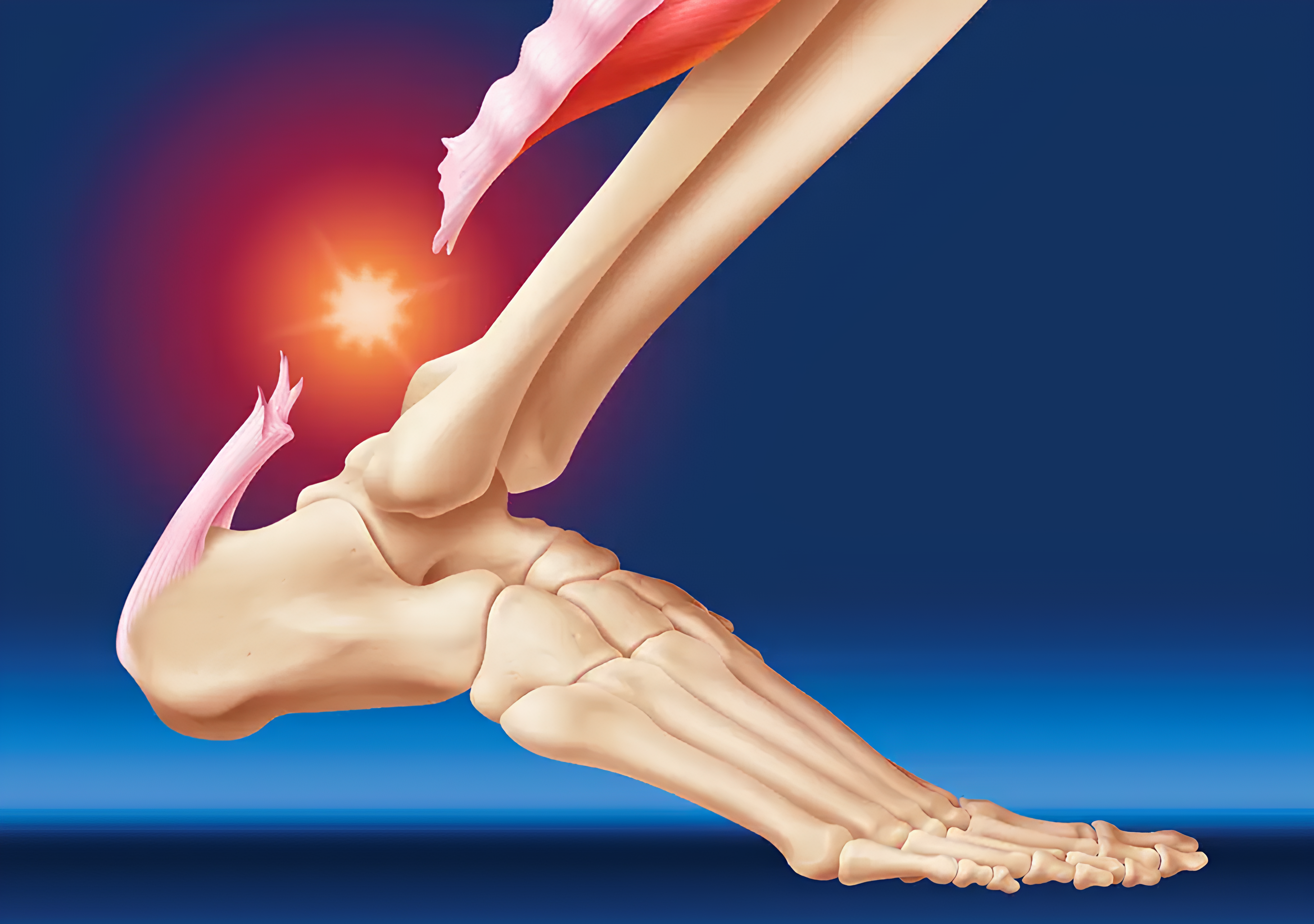
The Achilles tendon is a thick tendon located in the back of the leg
Achilles injuries can occur in several places, but the most common area is at the muscle-tendon junction – the area where the calf muscles join with the tendon.
Chronic, long-lasting Achilles tendon disorders range from overuse injuries that cause inflammation or degeneration, to acute traumas such as Achilles tendon ruptures. Pain along the back of the ankle or in the heel are often the result of distinct problems along the course of the Achilles tendon or at its point of attachment to the heel of the foot.
Over-pronation occurs in the walking and/or running process when the arch collapses upon weight-bearing, adding stress on the Achilles tendon. Other factors that lead to Achilles Tendonitis are improper shoe selection, inadequate stretching prior to engaging in athletics, a short Achilles tendon, direct trauma (injury) to the tendon, and heel bone deformity.
PREVENTION
Those with Achilles tendonitis should wear lightweight, shock-absorbing orthotics to help reduce stress and pressure on the Achilles tendon. The orthotic can help control over-pronation, support the longitudinal arch, and reduce stress on the Achilles tendon.
Rifat TOPCUOGLU M.D.
HELL SPUR
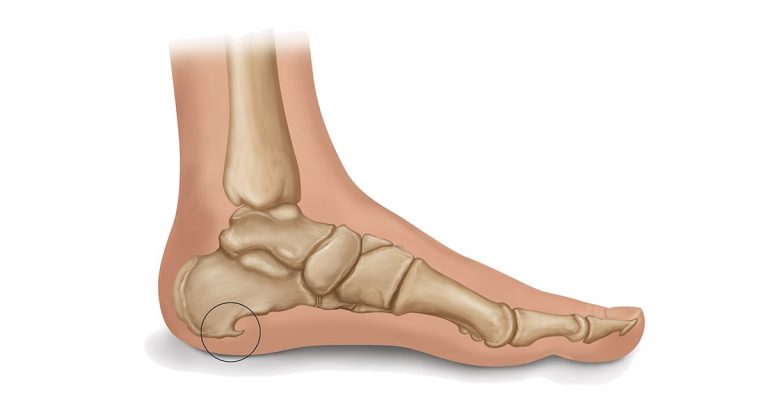
A heel spur is a bone-like calcium deposit located between the heel bone and the arch of the sole. Typically around 0.5 cm in length, it is very small and therefore cannot be seen from the outside.
Heel spur symptoms can appear as soon as you get out of bed in the morning or may develop in people who stand for long periods. In such cases, resting can gradually reduce the pain.
Causes of Heel Spurs:
- Jumping and running in non-supportive shoes
- Walking on very hard surfaces
- Trauma or injuries in the muscles and connective tissues of the foot
- Pain due to arthritis or being overweight
- Wearing uncomfortable and non-anatomical shoes
- Wearing flip-flops (especially thong-style) for extended periods
- Trauma in the heel area due to impacts or hard blows
- Rheumatic complaints in the spine and lower back, as well as aging
Suggestions for Heel Spurs:
- Comfortable and well-fitting shoes:These types of shoes can help reduce pressure on the heel spur.
- Firm heel support:The back “counter” of the shoe should be firm to support the heel and prevent your foot from rolling inward or outward.
- Slightly elevated heel:A heel insert or shoe with a slightly elevated heel (no more than 4 cm high) can help relieve pressure on the painful heel.
Additionally, you can use custom anatomical insoles, which help prevent your foot from rolling and provide extra heel support. You can obtain these insoles from Dr. Mery.
Rifat Topcuoglu, M.D.
FLAT FEET

Flatfeet is a common condition, also known as flatfoot, in which the arches on the inside of the feet flatten when pressure is put on them
Flatfeet is usually painless.
Factors that can increase the risk of flatfeet include:
Obesity
Injury to the foot or ankle
Rheumatoid arthritis
Aging
Diabetes
All babies have flat feet at birth. Arches typically form by age 6. About two out of 10 children still have flat feet as adults.
What are the types of flat feet?
Flat feet can pose problems whether they persist after childhood or develop in adulthood. The types of flatfoot include:
Flexible: Flexible flat feet are the most common. You can see the arches in the feet when you aren’t standing. The arches disappear when you put weight on the feet. Rigid: A person with rigid flat feet has no arches when standing (putting weight on the feet) or sitting (no weight on the feet). This condition often develops during the teen years and gets worse with age. Having flat feet may be in your genes. As a child ages, arches form in the feet. Some people have high arches, while others have very low or nearly absent arches, causing flat feetSome people develop flat feet later in life. The condition sometimes runs in families. And certain problems increase your risk of flat feet
Rifat TOPCUOGLU M.D.
VARICOSE VIENS
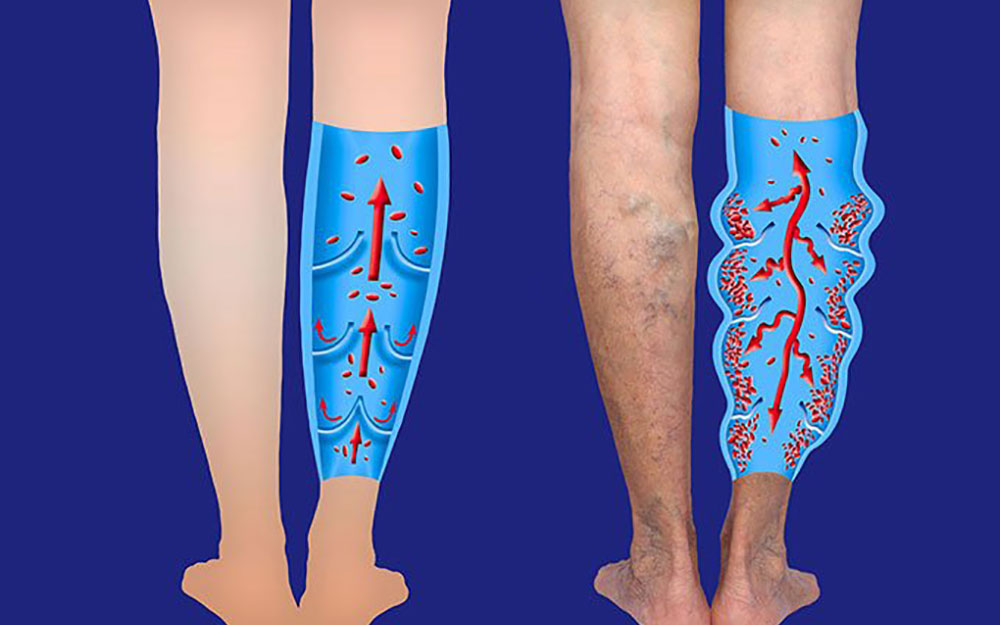
The veins have one-way valves so that the blood can travel in only one direction. If the walls of the vein become stretched and less flexible, or elastic, the valves may get weaker.
A weakened valve can allow blood to leak backward and eventually flow in the opposite direction. When this occurs, blood can accumulate in a vein or veins, which then become enlarged and swollen.
The veins farthest from the heart, such as those in the legs, are most often affected. This is because gravity makes it harder for the blood to flow back to the heart.
Normally, one-way valves in your leg veins keep blood moving up toward the heart. When the valves do not work properly, they allow blood to back up into theo vein. The vein swells from the blood that collects there, which causes varicose veins over time.
Varicose veins are common, and affect more women than men. However, if the flow of blood through veins becomes poor enough, problems such as leg swelling and pain, blood clots, and skin changes may be present.
Every time the muscles contract, they squeeze the deep veins in the legs together and transport the blood further. Here too, the venous valves determine the direction of flow and stop the blood flowing backwards.
Long periods of standing or sitting still can lead to blood pooling in the legs.
Whenever the muscles of the feet and legs are working, the muscle pump works too and jump-starts venous return again.
Rifat TOPCUOGLU M.D.
METATARSALGI
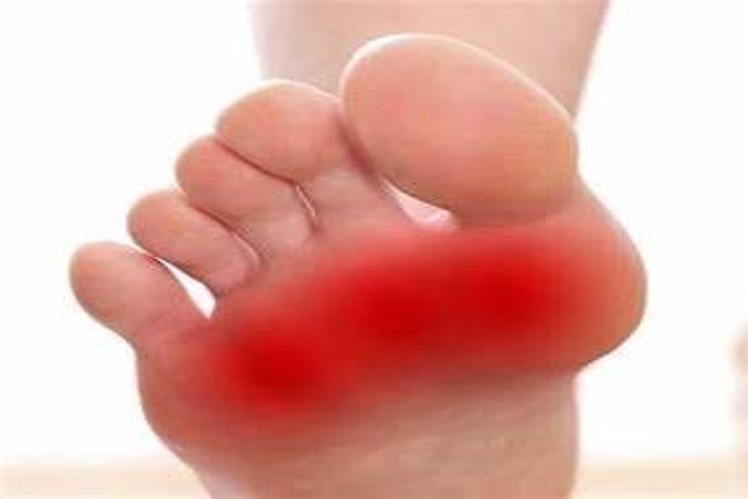
Your foot becomes painful and inflamed. You might develop it if you participate in activities that involve running and jumping. There are other causes as well, including foot deformities and shoes that are too tight or too loose.
Although generally not serious, metatarsalgia can sideline you. Fortunately, at-home treatments, such as ice and rest, often relieve symptoms. Wearing proper footwear with shock-absorbing insoles or arch supports might prevent or minimize future problems with metatarsalgia.
Rifat TOPCUOGLU M.D.
HAMMER TOE
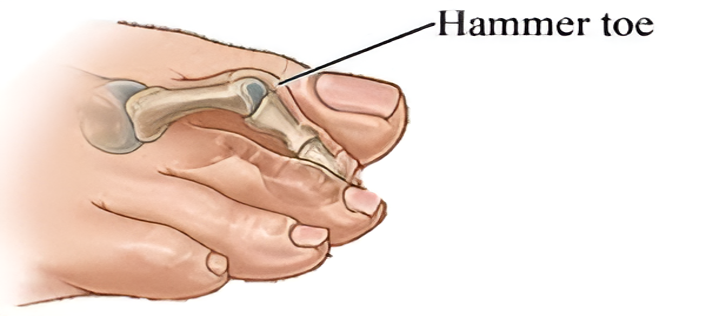
Your toes appear crooked or bent downward you may be suffering from hammer toes, mallet toes or claw toes. These three very similar toe deformities result in shortening of the toe tendons thereby limiting toe motion, and causing claw-shaped toes and painful rubbing inside shoes.
Mallet toe usually develops gradually, when forces — like the shoes you wear or the way you walk — cause a tendon in your toe to tighten and contract. The contracture is usually somewhat flexible in the early stages, but after a while, it becomes rigid and “fixed.” Contributing causes may include:
Poor-fitting shoes.
High heels.
Congenital (present at birth) foot differences.
Previous injury.
Neuromuscular disorders.
Foot and ankle arthritis.
Change your footwear. Choose shoes with roomy toe boxes, low heels, and good arch supports. Sandals or athletic shoes that don’t rub on your toe may be a good option. You could also try custom-made shoes or shoes made for people who have foot problems.
Use products that cushion the toe or hold the foot in a more comfortable position, such as moleskin, toe tubes, arch supports, or other shoe inserts (orthotics).
Rifat TOPCUOGLU M.D.
HALLUX VALGUS
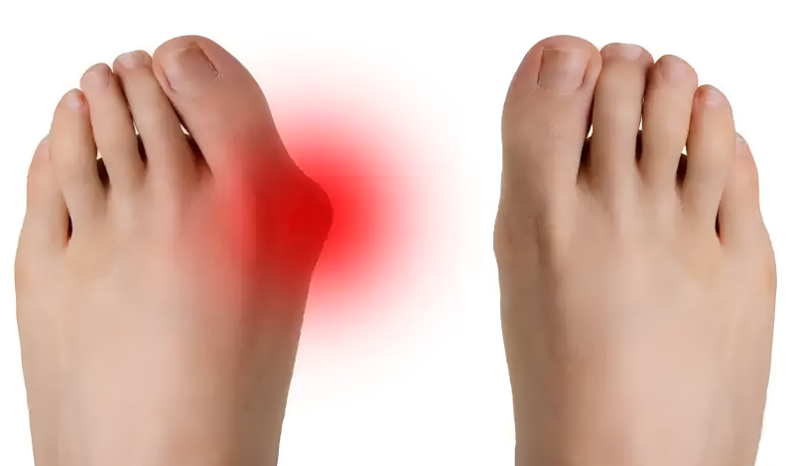
Rifat TOPCUOGLU M.D.
EDEME FOOT

Edema is swelling caused by fluid trapped in your body’s tissues ,most often in your feet and ankles.
Padding is important in a shoe for swollen feet because it provides the comfort and support needed to help relieve pain and pressure on the foot.
If the foot has edema,often the articulation of the ankle is compromised and it can be diffucult to manoever your foot easly into the shoe. A shoe for edema needs to open up so the foot can be easily placed on the footbed.
Common causes of edema are prolonged standing,prolonged sitting,pregnany,being overweight,and increase in age.
Padding is important in a shoe for swollen feet because it provides the comfort and support needed to help relieve pain and pressure on the foot.
Edema shoes are available for people who experince chronic edema and need adjustablefootwear forsw
Rıfat TOPCUOGLU M.D.
DIABETES
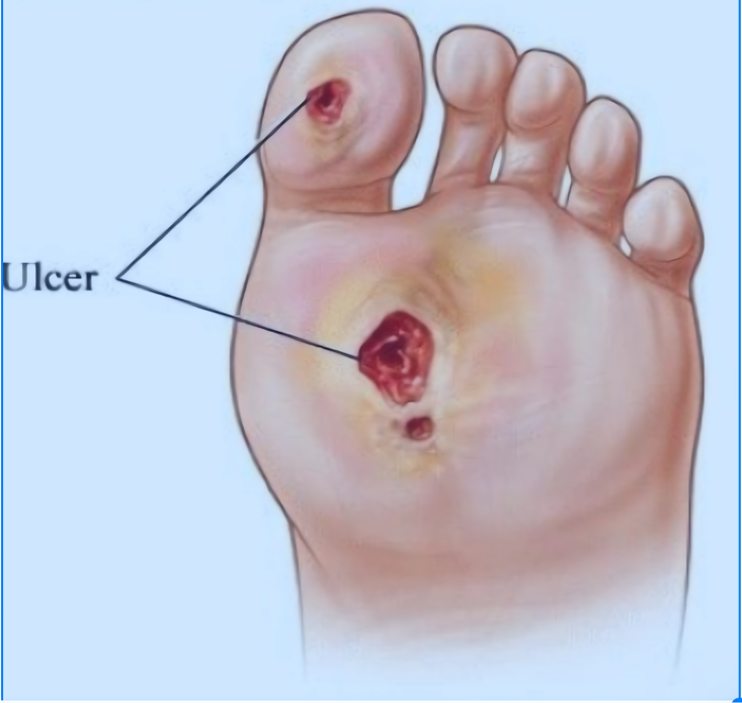
Diabetes is a chronic disease in which the body’s ability to produce or use the hormone insulin is impaired. Insulin is a hormone that regulates blood sugar. Diabetes makes it difficult for the body to use glucose (sugar) for energy, causing blood sugar levels to rise uncontrollably. There are three main types: Type 1 diabetes, Type 2 diabetes, and gestational diabetes.
Managing diabetes is crucial to prevent complications like heart disease, kidney failure, and nerve damage.
The Effects of Diabetes on Foot Health are Quite Serious. High blood sugar levels can lead to nerve damage (diabetic neuropathy) and circulation issues over time, putting foot health at risk. These conditions can make injuries and infections more likely and harder to heal.
Suggestions for Protecting Foot Health:
- Check your feet daily to notice any injuries early,
- Avoid soaking feet in hot water and be careful of burns,
- Keep feet clean and moisturized, but dry them properly to prevent moisture buildup,
- Choose comfortable, protective shoes rather than tight, narrow shoes,
- Keep blood sugar levels under control.
Diabetic Shoes are specifically designed to protect the foot health of diabetic patients. The main goal of these shoes is to protect the feet from skin damage caused by wounds, friction, and pressure, thereby reducing the risk of diabetes-related complications. Key features of diabetic shoes include:
- Wide and Deep Design:
- Seamless Interior:
- Extra Support and Cushioning:
- Soft and Breathable Materials:
- Removable Insole:
- Shock-Absorbing Sole:
- Non-Slip Sole:
The Importance of Diabetic Shoes: Diabetic shoes offer significant protection, especially for diabetic patients with neuropathy or circulation issues. Choosing suitable diabetic shoes helps protect foot health and greatly reduces the risk of wounds and infections.
Rifat TOPCUOGLU M.D.
PREGNANCY AND YOUR FEET
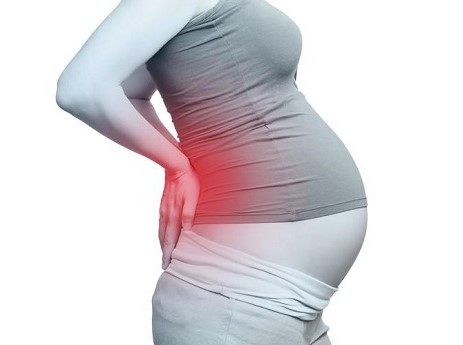
We all know that pregnancy brings multiple changes to the body, but you may be surprised to hear how it affects the feet. Often swelling in the feet is not significantly increased until the 2nd trimester. During this time the change in hormones results in an approximately 50% increase in your blood volume, which understandably increases leg swelling.
The farther along you get in your pregnancy, the accumulation of weight gained will place an increasing amount of stress on the feet.
Also consider limiting the time you spend on your feet, and elevate them as much as possible. Taking walks also helps. As you walk, the muscles contract and force the blood back up to the heart and the one-way valves in the veins prevent it from returning to the feet.
When purchasing the shoes you’ll wear throughout your pregnancy, there are a few things to consider. Look for shoes that will give you a little extra room. You may consider getting a shoe a half to a whole size larger. Do not choose shoes that are constructed with rigid materials or have straps that are not adjustable. This may cause cutting off circulation if your feet swell. Dr Mery shoes are the best shoes to wear during pregnancy
Dr Mery shoes have a larger toe box, mesh top covering and increased cushioning which are well suited for foot swelling.
As your pregnancy progresses, it will be harder to bend over and tie your shoes
Another thing to remember is to avoid walking barefoot as this might increase foot pain as weight gain increases the stress on the foot.
Remember comfortable footwear (Dr.Mery) is an important part of maintaining good foot health, especially throughout pregnancy
Rifat TOPCUOGLU M.D.
SILVER SOCKS

Pure silver yarn causes no side effects when it comes into contact with human skin. Clinical studies have conclusively proven the antimicrobial effects of silver.
Silver eliminates 99.9% of bacteria and fungi within an hour and is effective against more than 400 types of microorganisms.Thanks to pure silver yarn technology, Dr. Mery socks keep your feet warm in cold weather. Their antibacterial and antimicrobial properties help prevent wounds and infections on your feet.
Dr. Mery socks, specifically designed for diabetic patients, feature a special elastic band that does not constrict your feet or hinder blood circulation. The silver coverage up to the ankle prevents swelling, while the seamless toe design eliminates irritation.
In all Dr. Mery products, pure silver metal is used at a concentration exceeding 10%. Silver metal can be easily detected with sensitive detectors and is clearly visible to the naked eye.
Features of Dr. Mery Silver Socks:
- Specially designed elastic band for diabetic patients that does not constrict the feet or hinder blood circulation.
- Seamless toe design prevents irritation.
- Improves blood circulation, preventing numbness and swelling in the feet.
- Promotes faster healing of foot wounds.
- Prevents fungal infections and eczema.
- Keeps feet warm in winter and reduces sweating in summer.
- Eliminates static electricity in the body, reducing fatigue and stress.
- Provides protection against radiation.
- Prevents swelling during long journeys.
- Inhibits the growth of bacteria and microbes on the feet.
Dr. Rifat Recommends Dr. Mery Socks for:
- Diabetic patients
- Individuals with sweaty or cold feet
- Those suffering from foot fungus, eczema, or swelling
- People with foot odor problems
- Individuals undergoing wound treatment
- Pregnant women
- Soldiers and athletes
- People who travel long distances
- Those who stand for long hours
- Anyone who prioritizes foot care and health
Rifat TOPCUOGLU M.D.
